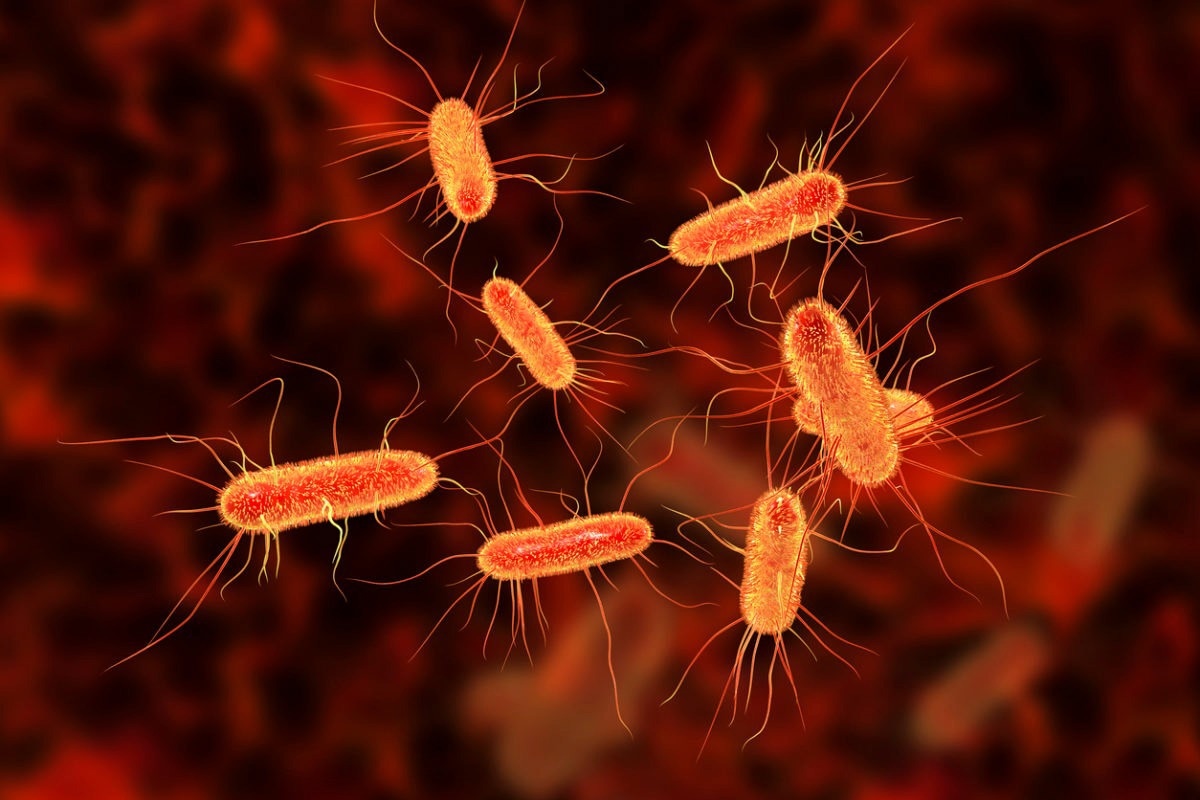The prescription humans use to manage high blood pressure, discomfort, or memory loss may one day originate from modified bacteria, cultivated in a vat like a yogurt, offering more inexpensive, sustainable drug options than people now have. And sooner than previously anticipated, the process of boosting drug manufacture in bacterial cells may be possible owing to a new bacterial tool created by researchers at The University of Texas at Austin.
 3D illustration of E. coli bacteria. Scientists used these bacteria to create a biosensor that could speed up drug development. Image Credit: University of Texas at Austin.
3D illustration of E. coli bacteria. Scientists used these bacteria to create a biosensor that could speed up drug development. Image Credit: University of Texas at Austin.
Researchers have been looking for solutions to reduce the cost and environmental impact of pharmaceutical manufacturers’ present procedures, many of which rely on either plant crops or petroleum, for decades. The use of bacteria has been recommended as a suitable organic alternative, but it is challenging and time-consuming to find and optimize the synthesis of therapeutic molecules, taking months at a time.
The UT Austin team describes a biosensor system built from E. coli bacteria in a new publication published in Nature Chemical Biology. This system can be modified to detect various medicinal chemicals precisely and in a matter of hours.
We’re figuring out how to give bacteria ‘senses,’ similar to olfactory receptors or taste receptors, and use them for detection of the various compounds they might make.”
Andrew Ellington, Study Corresponding Author and Professor, Molecular Biosciences, University of Texas Austin
Many of the medicines people use are formulated with plant-based components (think, for example, morphine, the narcotic painkiller that origins from poppies, or galantamine, a drug treatment for dementia that origins from daffodils). These plants require water and land to cultivate the crops, making the drug extraction process difficult and resource-intensive. Supply chains are susceptible to interruption.
Additionally, drought, fire, and floods may all harm crops. Synthetic chemistry used to create comparable medicinal components has its own set of issues because it depends on wasteful petroleum and petroleum-based goods.
Here is a simple, cost-effective, and sustainable replacement: bacteria. It is simple to alter bacteria’s genetic code so that they may be used as drug manufacturing plants. The biological systems of the bacteria are used in a procedure known as biosynthesis to manufacture certain chemicals as a byproduct of cellular activity. And microorganisms have a rapid rate of replication. They only need sugar to do the task.
Until recently, however, there has not been a straightforward way for manufacturers to compare several strains of altered bacteria to determine which ones can produce a particular medication in large enough numbers for commercial use. With present technology, it can take weeks or months to accurately analyze the hundreds of modified strains that are on route to a good producer, but the new biosensors can do it in just one day.
There are currently no biosensors for most plant metabolites. With this technique, it should be possible to create biosensors for a wide range of medicines.”
Simon d’Oelsnitz, Study First Author and Research Scientist, Department of Molecular Biosciences, University of Texas Austin
The biosensors created by d’Oelsnitz, Ellington, and coworkers quickly and precisely estimate how much of a certain chemical a particular bacterial strain is generating. The group created biosensors for a number of popular drugs, including vasodilators and cough suppressants, which are used to alleviate muscular spasms.
Wantae Kim and Yan Jessie Zhang, X-ray crystallographers, captured molecular images of the biosensors to demonstrate how strongly they bind to their companion medication. The medication glows when the biosensor picks it up.
The scientists also built their own bacteria to generate a substance that can be found in a number of FDA-approved pharmaceuticals while using biosensors to monitor product production, thus demonstrating how the industry may swiftly embrace biosensors to optimize chemical manufacturing.
While this is not the first biosensor, this technique allows them to be developed faster and more efficiently. In turn, that opens the door to more medicines being produced using biosynthesis.”
Simon d’Oelsnitz, Study First Author and Research Scientist, Department of Molecular Biosciences, University of Texas Austin
Source:
Journal reference:
d’Oelsnitz, S., et al. (2022) Using fungible biosensors to evolve improved alkaloid biosynthesis. Nature Chemical Biology. doi.org/10.1038/s41589-022-01072-w.